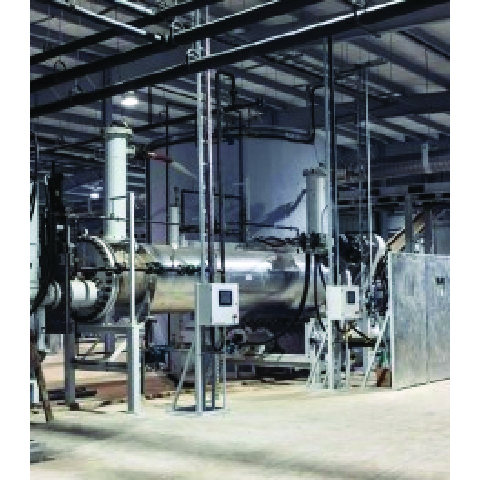
Abs: The processing system was developed that significantly reduces municipal solid waste (MSW) volume by converting it into usable end products.
A processing system was developed that significantly reduces municipal solid waste (MSW) volume by converting it into usable end products. The system includes: two shredders, a grinder, a hydrothermal process (hydrolyzer), dryer, and particle screens, as shown in the schematic in Figure. The input material is MSW, which includes glass, plastics, paper, cardboard, food scraps, metal cans, etc. The waste is first shredded and ground to reduce it to a consistent particle size, between 0.5 and 1 inch. The shredded waste is then augured through the hydrolyser where it is exposed to high-pressure steam. The process causes cellulose fibers in the paper, cardboard, food, etc. to expand, creating a soft, gray, end product appropriately named “fluff”. Within the fluff are small kernels of plastics, metals, and glass. Metals, glass, and some plastics are not affected by the hydrothermal process, and are removed by screening.
The output from the process can be reused in two ways. After the plastics, glass, and metal fines are removed, the cellulose material can be used as a soil amendment for improving soil quality or soil stabilization applications. The fluff product is currently sold to the landscaping industry. Unscreened output from the hydrolyzer can be extruded to make a material similar in appearance (but not strength) to plastic lumber.
